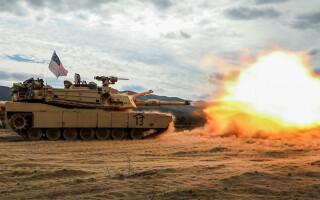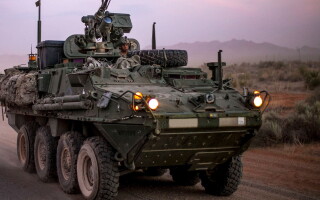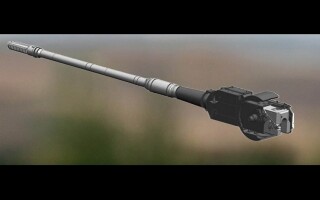For decades, militaries have pursued a single idea, connecting every sensor, platform, and soldier into a unified web of intelligence. From the U.S. military’s network-centric warfare initiatives of the 1990s to the U.S. Defense Advanced Research Projects Agency (DARPA) Internet of Battlefield Things (IoBT) program launched in the late 2010s, this vision has steadily evolved.
Military Embedded Systems
Op-Eds
GUEST BLOG: AI-powered transformations ahead -- three predictions for 2026 - Blog
December 12, 2025Federal teams spent the past year testing artificial intelligence (AI) applications, measuring return on investment, and separating hype from reality. These teams identified where AI delivers results and where it falls short, gaining the experience needed to drive real transformation. Earlier this year, the White House AI Action Plan called on the U.S. Department of Defense (DoD) to aggressively adopt AI across functions from the battlefield to back-office operations, thereby signaling the government's commitment to moving beyond experimentation.
GUEST BLOG: The next innovation in AI for defense -- autonomous purple teaming - Blog
December 12, 2025The mid-2025 assertion from U.S. Department of Defense (DoD) chief technology officer Emil Michael that artificial intelligence (AI) will “transform future warfighting” is echoing across the entire defense industry. It’s clear that AI has rapidly become a non-negotiable technology for the DoD, particularly in warfighting environments.
GUEST BLOG: Layered defense is key to the domestic threat posed by unmanned systems - Blog
December 12, 2025The U.S. is underprepared for the urgent and serious threat that unmanned aerial systems (UASs), also known as drones, pose to our nation.
GUEST BLOG: MOSA is the conduit for commercial insertion … but there is a floor to commoditization - Blog
December 12, 2025The insertion of commercial products into military acquisitions is critical for the future strategic advantage of the U.S. and allied nations; the recent acquisition reforms put forward by the U.S. Department of Defense (DoD) and Secretary Hegseth put this certainty front and center. The reasons are obvious: The continued conflict in Ukraine, the rapid increase in Chinese production capability, and technological advancement in artificial intelligence (AI).
GIVING BACK: The Armed Services YMCA - Blog
December 04, 2025Each issue, the editorial staff of Military Embedded Systems will highlight a different organization that benefits the military, veterans, and their families. We are honored to cover the technology that protects those who protect us every day.
Making the case for MOSA - Blog
November 20, 2025Six years have passed since the tri-service memo was issued by the Air Force, Army, and Navy leadership mandating the use of a modular open systems approach (MOSA) in all new programs and technology refreshes. Many in the defense community were already embracing MOSA strategies and leveraging open standards, but having the three services mandate it promised faster adoption. Update: It’s happening. MOSA is already the law and now defense secretary Pete Hegseth is dictating a MOSA approach as part of his efforts to reform and speed up the defense acquisition process.
GUEST BLOG: Looking at the European and Pacific military markets - Blog
October 30, 2025WARFARE EVOLUTION BLOG. Before we jump to another topic in these articles, it would be appropriate, relevant, and instructive if we conclude this series on the worldwide military markets by looking at NATO in Europe, and the spending by military alliances and security agreements in the Pacific area. The SIPRI report (Stockholm International Peace Research Institute) does a nice job of breaking down the regional military markets if you need more details than we cover here. Put this information under demand-side data in your collection.
GIVING BACK: Everyone for Veterans - Blog
October 09, 2025Each issue, the editorial staff of Military Embedded Systems will highlight a different organization that benefits the military, veterans, and their families. We are honored to cover the technology that protects those who protect us every day.
GUEST BLOG: Solving CJADC2's last mile - Blog
October 09, 2025On today’s battlefield, the task of ensuring that critical data reaches the tip of the spear more quickly and reliably is pivotal, yet is sometimes overlooked. While major investments have been made in bolstering data flow to and from the tactical operations center (TOC), this reality disregards the most critical part of the battlespace: the ultimate edge, or the last mile, where forward-deployed warfighters and unmanned systems operate. Here, connectivity isn’t just a convenience – it’s the lifeline for split-second decisions and survivability. In an autonomy-first world, warfighters need a new paradigm for supporting operators where it matters most.
Demand for open standards, architectures growing in Europe - Blog
September 10, 2025LONDON -- DSEI UK 2025. Speaking with embedded computing suppliers at the DSEI 2025 show in London this week, I’m hearing growing support of requirements for open standards and open architectures, even if they don’t necessarily know about the U.S. Department of Defense (DoD) mandate for MOSA, or modular open systems approach, content.
GUEST BLOG: Now a necessity -- Accelerating defense readiness through AI-enabled systems engineering - Blog
September 05, 2025The next generation of defense systems will not excel in modern warfare through hardware alone, but rather by how quickly and confidently we can design, validate, and deploy it. As mission complexity increases and multidomain coordination becomes the norm, traditional engineering approaches are unable to support today’s complex system of systems. The conflict in Ukraine has shown that using artificial intelligence (AI) in unmanned systems is a viable solution to reduce direct warfighter involvement while enhancing and increasing combat effectiveness.
GUEST BLOG: Sensor fusion at the tactical edge – Why GPUs are essential for modern C5ISR systems - Blog
September 05, 2025Modern C5ISR [command, control, communications, computers, cyber, intelligence, surveillance, and reconnaissance] platforms are only as effective as their ability to process and analyze the data gathered from sensors.
GIVING BACK: Warrior Canine Connection - Blog
September 03, 2025Each issue, the editorial staff of Military Embedded Systems will highlight a different organization that benefits the military, veterans, and their families. We are honored to cover the technology that protects those who protect us every day.
GUEST BLOG: Why MRAM matters more than ever for military embedded systems - Blog
September 03, 2025Processors, algorithms, and power constraints are frequently discussed in the military embedded systems arena. But memory is more than passive storage: Embedded systems for defense and aerospace applications need to react quickly, and the memory that keeps mission-critical work in motion doesn’t always get the credit it deserves.
-
Radar, optical sensors for armored vehicles nabs ELTA a series of contracts
December 17, 2025
-
IFF systems from BAE Systems will be used on South Korean fighter jets
December 16, 2025
-
PRODUCT OF THE WEEK: Annapolis Micro Systems WILDSTAR 6U OpenVPX switch
December 15, 2025
-
SPEXER 2000 radar selected for Rheinmetall air defence systems
December 15, 2025
-
GUEST BLOG: AI-powered transformations ahead -- three predictions for 2026
December 12, 2025
-
GUEST BLOG: The next innovation in AI for defense -- autonomous purple teaming
December 12, 2025
-
DISA chief to industry: 'your system is not interesting' without data sharing
December 11, 2025
-
Generative AI, cognitive electronic warfare to anchor technical track at AOC 2025
December 04, 2025
Cyber
-
DoD awards Hewlett Packard Enterprise a 10-year contract for cloud computing upgrades
December 01, 2025
-
PRODUCT OF THE WEEK: Atek DataKey Mini-Bar Crypto Ignition Key series
November 10, 2025
-
Network and cyber support contract signed between Sev1Tech and Navy command
October 15, 2025
-
Firefly Aerospace to acquire SciTec, Inc.
October 06, 2025
-
Maritime SATCOM systems to be supplied for NATO by Orbit
December 23, 2025
-
200 Puma infantry fighting vehicles to be procured for German Bundeswehr through PSM
December 22, 2025
-
Disk-shaped satellites lift off in NASA, Space Force experiment
December 18, 2025
-
Space reconnaissance agreement signed by ICEYE and Rheinmetall
December 18, 2025



















